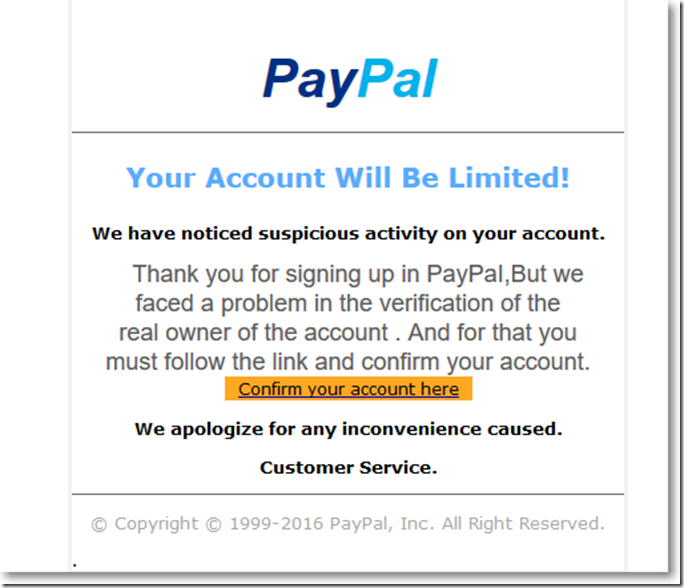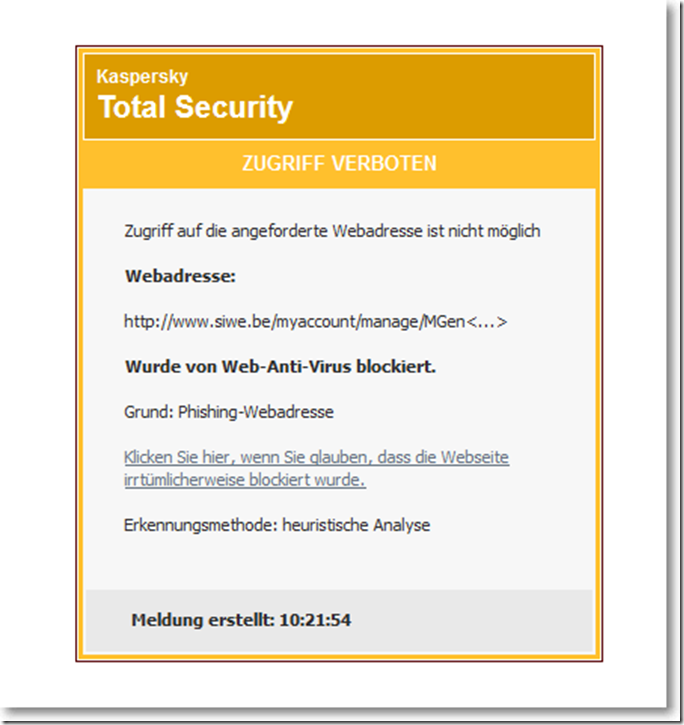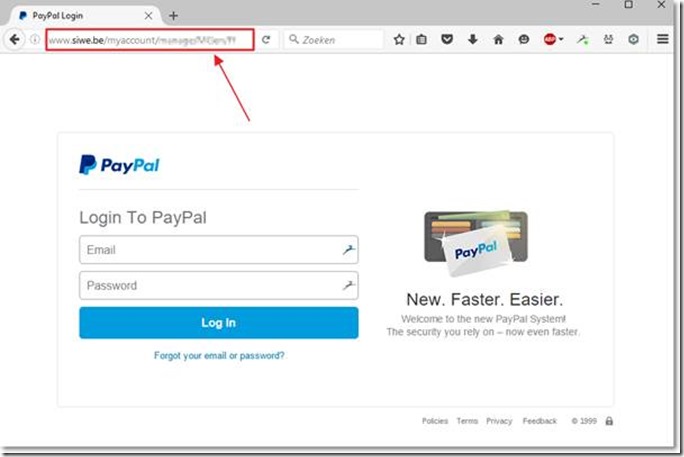“New sign-in from Android” is what the subject of the email sounds like, which looks like it was sent from PayPal.
Important note: The company mentioned has nothing to do with the scam . You yourself have become a victim here, with your name being misused to lure users into a trap!
The email says:
Your account will be restricted!
We have detected suspicious activity on your account.
Thank you for registering with PayPal, but we are having a problem verifying the real owner of the account. To do this, you must click the link to confirm your account.
We apologize for the inconvenience.
The goal of this email is to make the recipient unsure and convince them to click on the link.
Be careful, phishing!
As soon as we click on the link, Kaspersky Total Security block it!
If you don't antivirus software on your computer, you will be taken to a login page that looks like PayPal's. But be careful! Anyone who enters valid data here is giving it away to fraudsters!
Important at this point: the URL shown is “http://www.siwe.be/myaccount/manage/……””. This is not PayPal !
In the course of this phishing process, several fake input fields appear that first request login data and then want to receive personal and sensitive bank data. Any type of entries made here end up in fraudster databases!
ZDDK notice!
If you receive an email like this, make sure it actually comes from PayPal. If you are not sure, send the complete email directly to PayPal to check. The following email address is available for this: [email protected] or [email protected] . You can also contact us via the free customer service telephone number: 0800 723 45 00.
General phishing warning:
- Phishing emails generally try to appear as if they come from the relevant company . Fraudsters use these to try to get personal data, preferably bank credit cards or other payment data.
- Protection software is helpful! With updated databases and appropriate heuristics, malicious sites are often blocked. We use Kaspersky protection software .
- The real “art” of these emails is the story with which the recipient is supposed to trust the email and open the inserted link. Expression, grammar and spelling, as well as plausibility and individuality play a very important role here. Especially in the recent past, there have been an increasing number of emails that shined with individuality: they could address the recipient with the correct name and also provide actual address and personal data.
- However, you can generally note: Banks, payment and purchase portals never ask you to log in to the account using a built-in link! In addition, although a generic salutation is always an indication of phishing, an existing correct salutation is not proof of the authenticity of an email .
- Tip on your smartphone: press and hold a link until a dialog window opens with the link preview. This shows where an embedded link should lead.
- Never log in via a link that is sent by email, but always type the relevant page by hand into the address bar of your browser and log in there. If there are actually announcements for the relevant service, they will be displayed there. In addition, if possible, you should also refrain from conducting banking transactions via public/third-party Wi-Fi networks , as you never know exactly whether (and in an emergency, by whom) these networks are being logged.
- Never enter real data in the form fields! Under certain circumstances, the data can even while typing without having to confirm with “continue”.
Notes:
1) This content reflects the current state of affairs at the time of publication. The reproduction of individual images, screenshots, embeds or video sequences serves to discuss the topic. 2) Individual contributions were created through the use of machine assistance and were carefully checked by the Mimikama editorial team before publication. ( Reason )




